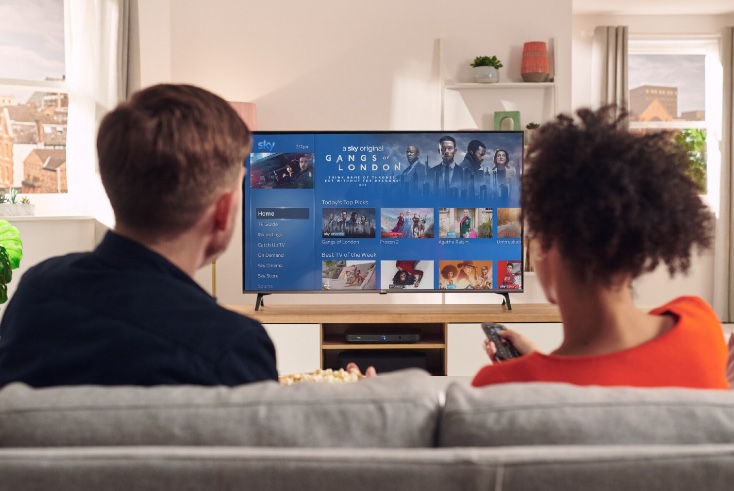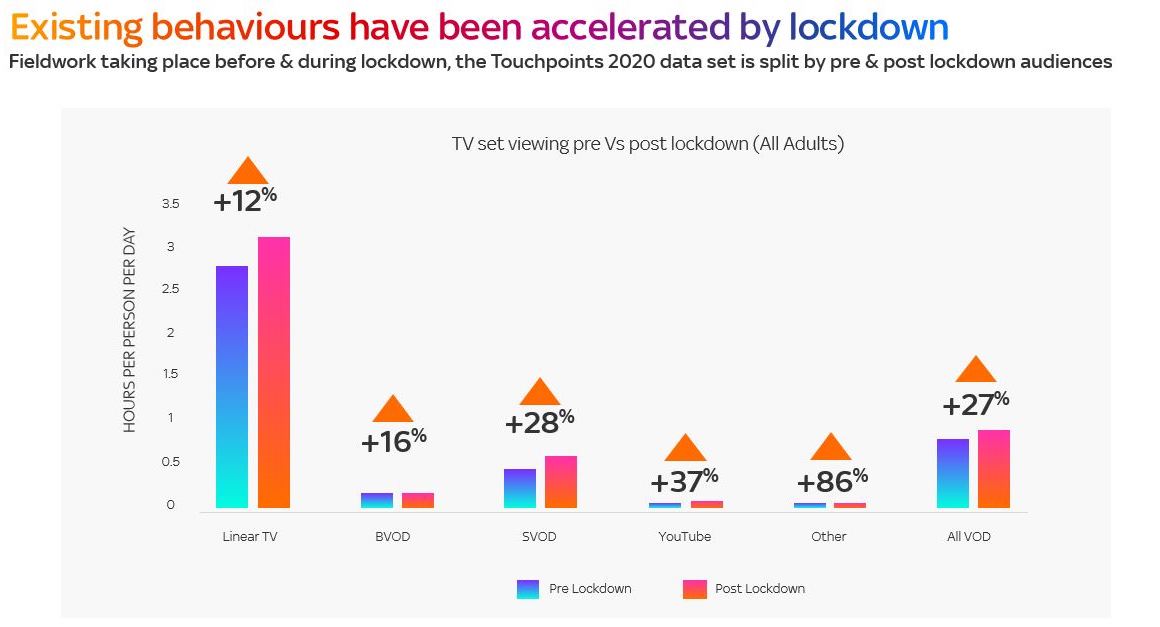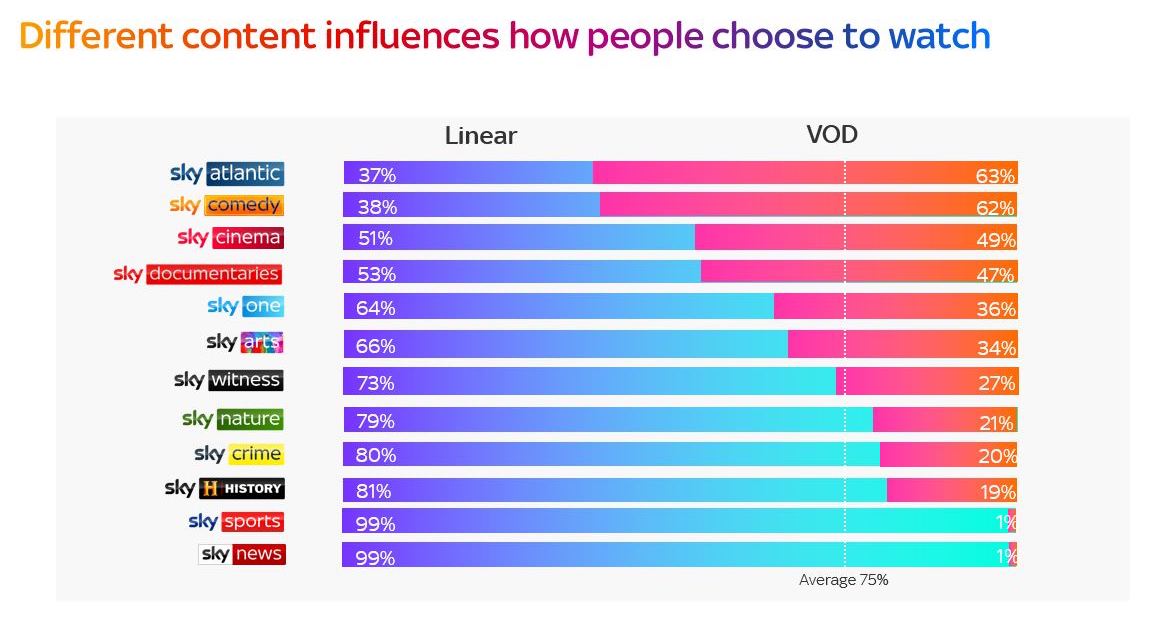‘Sorry TV’s so complex, I didn’t have time to make it simpler’

Partner content
John Litster, managing director at Sky Media, considers the need for simplification in media and calls on the industry to start making a change
Mark Twain, Blaise Pascal, Winston Churchill, Dostoevsky – just a few of those who have been credited with variants of the phrase, “sorry for the long letter, I didn’t have time to make it shorter”. But what’s that got to do with TV advertising?
In an article discussing the need for simplicity, you’ll have to excuse the irony of 1500 words to give a little context.
In the last 10 years, the TV industry has experienced more transformation than in the previous 50. Having spent not quite 50 years in the TV advertising industry, there is no doubt that the complexity and pace of change is greater than it ever was.
From three channels to 140, from one device to five, from one broadcast platform to a plethora of choice, TV (in all its forms) has not just evolved, it’s exploded. It shouldn’t be a surprise that with so much flexibility and choice, on average people in the UK are still watching over 3.5 hours of TV a day.
In the last 5 months we have seen record TV viewing
And then, a global pandemic hit. With more time spent at home, TV kept the nation entertained, connected and informed with familiar, trusted and escapist content. We saw new viewing records for Sky Sports, Channel 4 and Channel 5.
At Sky, on-demand viewing hit a new high – up 36% YoY, with the 4th of June becoming our biggest ever day for on-demand consumption.
It wasn’t just a moment in time. Since the first lockdown, TV viewing has continued to go up across the board (+12% linear, +15% BVOD, +26% SVOD) and in the first weekend of the second lockdown we’ve seen an 11% viewing uplift versus the previous 6 weeks.

As often happens in big transitional moments, emerging behaviours have been accelerated, driven by changing consumer needs and enabled by technology. But this acceleration in behaviour also means an acceleration in complexity for the media industry.
Audience viewing is now truly multi-dimensional
At Sky, our unique access to viewing data offers a rich understanding of how viewing is changing and how, with innovations in technology, we are driving a change in viewing habits too. Let’s spend a bit of time unpacking what we know…
- Demographic stereotypes are evolving
The TV viewing population and the rituals within each group are changing at different speeds, with a narrative previously around an ageing audience. This has shifted with VoD, and accelerated by COVID, we see younger audiences rising again. 2020 currently has the highest total TV set viewing levels on record for 16-34s.
- Big screen still beats the best of the rest
New habits show TV being viewed across different platforms and devices, but the big TV screen experience still leads the way (92% of viewing) – helped by better connected platforms and players meaning catch-up services are no longer restricted to laptops and tablets.
This year, Netflix became part of the Sky basic package and Disney+ and BT Sport are accessible within Sky Q, alongside a wealth of other on demand content providers.
And with the proliferation of 4K and HDR making the viewing experience even better, as Rory Sutherland posed, ‘the only real threat to lounge TV viewing is if someone bans the comfy sofa’.
This attraction to the biggest screen in the house means the lounge is where the majority of content is still watched (89%). This pattern does change by content type, with a shift to other rooms (mainly bedroom and kitchen) for BVOD (78% lounge) and SVOD services (63% lounge).
- Sky Go is also equally Sky ‘stay’
In 2020 we’ve seen the biggest growth for Sky Go across mobile phones (+53%), followed by tables (+28%) and consoles (+28%). Why, with people not ‘GOing’ anywhere much?
With more people under one roof comes either a compromise in content consumption, or (as supported by the numbers) people choosing to watch content on their own terms, on their own devices.
Of all Sky Go viewing, 82% is watched inside of the home.
- Different content influences how people choose to watch
There is also a dynamic at a channel level where the type of content it provides shifts the way it is consumed.Sky channels on average are 75% linear viewed, with sports and news 99% live compared to hard-hitting drama on Sky Atlantic, where 63% is viewed on demand.

Some of our new channels, like Sky Comedy and Sky documentaries, launched this year with significant range on demand and a stacked strategy for new releases, driving a more even balance of live and on demand viewing.
This content driven behaviour is supported by Thinkbox’s ‘The Age of Television: the needs that drive us’ research. This outlines 8 need states that define why and how people watch TV – from ‘keeping in touch’ and ‘experience with others’ (which is driven by live content) to ‘distraction’ and ‘escape’ (which lean towards the choice that on-demand gives the consumer).
- Dayparts don’t determine platform choice any more
When on-demand first arrived on our screens, we treated it as a ‘micro-ritual’ – focused around weekend, ‘appointment to view’ moments, with households choosing something ‘special’ to watch.But this year we have reached a tipping point for VOD, where people are choosing to watch on demand content during the day too.
During lockdown, whilst linear volumes were boosted during the daytime more than peak, for VOD all day parts – both weekdays and weekends – are seeing the impact of behavioural change.
This year the biggest time slot % increase in viewing has been 2-3pm (linear +16% and on-demand +57%). The biggest linear increase has been between 11-12pm (+22%) and the biggest VOD increase (+70%) has been from midnight to 1am (late night viewing not such a problem when you haven’t got the morning commute!)
What more do we know about how VOD is consumed with this 2020 acceleration? We see middle of the day viewing increases more pronounced on a Wednesday and Thursday, with Thursday seeing the overall largest increases in VOD viewing.
With documentaries and hobby and leisure content driving these daytime uplifts, maybe the excuse of ‘edu-tainment’ takes the guilt out of daytime TV.
Increased choice makes planning complicated
With such a wealth of data on viewing, we could cut and re-cut this data by audience, channel, device, day part, platform or any other dimension for TV planning.
Then, as new platforms have been bolted on, they have adopted digital metrics rather than TV metrics. This has seen TV plans become fragmented between different platforms and different audience definitions, and the way that a linear TV campaign is measured versus a VOD campaign is different.
Plus, with different systems and approval deadlines, there is a lot of unnecessary admin around campaign management. It used to be digital specialists that spoke in code, but now the vast array of TV terms seems to have surpassed even that.
Different audiences, different prices, different measurement, different processes – it’s all starting to feel a bit too complicated.
All in one place, easy
As we explored above, audiences don’t differentiate between whether they are watching content in linear versus on demand. They simply sit down and find great stuff to watch.
Sky Q’s ‘all in one place easy’ approach aggregates all the content people love in one place, so whatever the format it makes it simple to find and watch the content they love. Sky Q customers watch more TV and enjoy their experience more.
With the nation’s viewing evolving at pace and the dimensions for TV planning becoming ever more complicated, what about ‘all in one place easy’ for TV advertising?
We’re spending the time making advertising easier too
Making things simpler takes time and needs a change in mindset too. At Sky Media, we’ve spent the last 18 months exploring how we can simplify the TV advertising market.
Our vision is to transform the way TV advertising is planned, measured, traded and managed by focussing on audiences, not platforms. Reach and connect with the right audience whenever and wherever they watch – in the knowledge it has the brand safety and high impact that only TV can provide. All in One Place Easy.
One audience (the audience the advertiser wants to reach), One measurement (measure in a unified way with CFlight allowing cross-platform reach and frequency), One price (unified metrics means prices can be simplified and blended).
And by stripping out the complexity to focus on driving the optimum blend of linear and VOD across BARB and addressable audiences, we hope not to just simplify how campaigns are booked, measured and managed, but to give the greater gift of time – time back to spend where it matters most.
So we’re investing time and money to make campaigns simpler and better. We’re calling it One Campaign, and we believe it will change the future of TV for the better.




